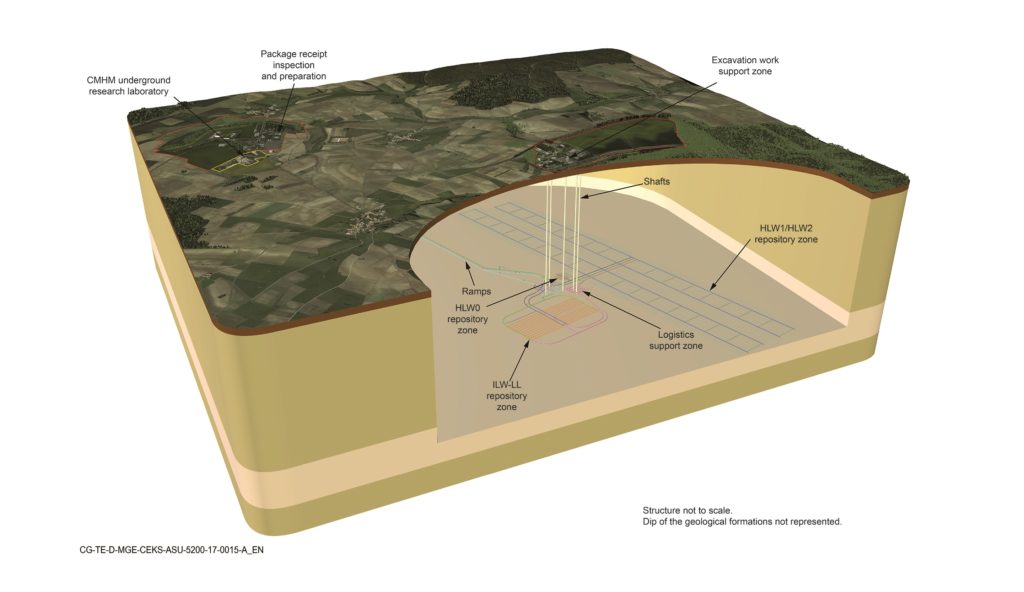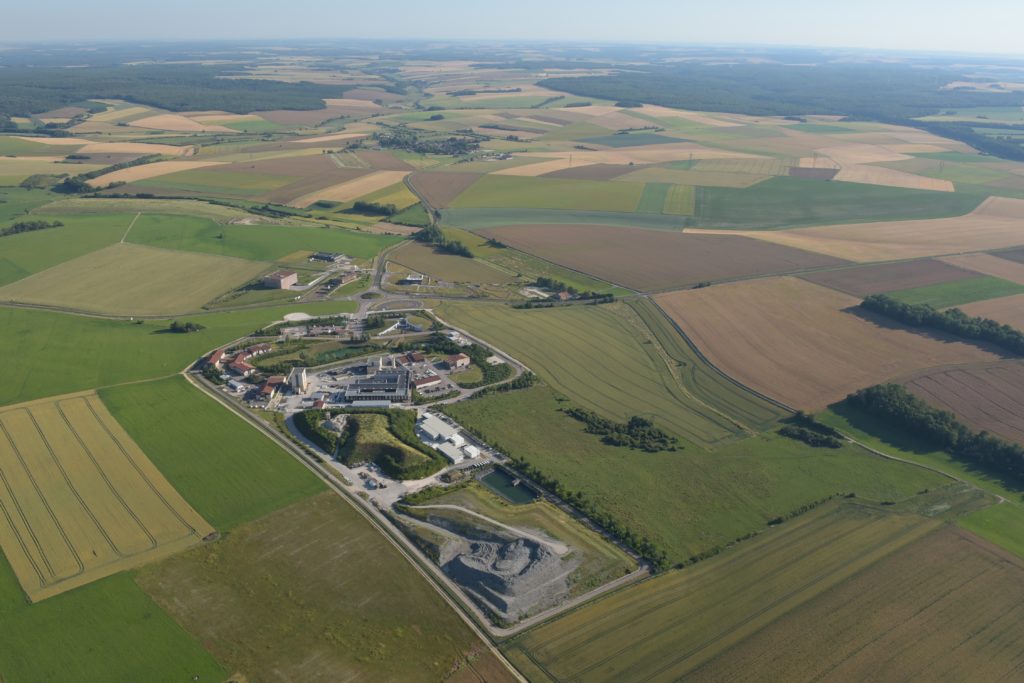
Underground nuclear facilities in France are sited where the population is sparse.
Meuse and Haute-Marne are contiguous departments in the Grand Est region of eastern France around 300 km southeast of Paris. Between the two departments, there is an average population of 7 people per km2 for a total of approximately 360,000 in 2017. The Bure Underground Research Laboratory (URL) and site of the future Deep Geological Respository (DGR) are situated in these two departments.2
URLs are research facilities constructed below ground to investigate waste disposal concepts and potential geological repository sites. They are pivotal steps within the development of deep geological repositories.
Decades of research have demonstrated that deep geological disposal is the most effective method for removing highly radioactive waste from human contact for hundreds of thousands of years as it decays. DGRs can take different forms but all emphasize the need for safe and secure containment of the most hazardous forms of nuclear waste.
Plans for the future repository are a product of decades of work.
The future DGR and associated facilities are intended to take up approximately 550 hectares (5.5 km2) aboveground and 15 km2 below ground. Reception and conditioning facilities will be positioned in Haute-Marne, while the digging and construction will be in Meuse, with a ramp running below ground from reception to the repository. High-level waste (HLW) disposal “micro-tunnels” will be 150m long, while intermediate-level waste (ILW) tunnels will be around 500m long. Waste will be transported by railway on the order of five trains annually during normal operation.
Radioactive waste is classified differently in different countries but generally relates to the waste’s level of radioactivity. In France, high-level waste (HLW) includes wastes from the reprocessing, or treatment and separation, of used nuclear fuel components. Long lived intermediate-level waste (LL-ILW) includes the cladding from used fuel while low-level waste (LLW) includes contaminated objects such as gloves or cleaning rags.
Burying nuclear waste underground keeps it safely contained and isolated from human activity. Certain rock types, for example clay or granite, help to prevent radioactive material from reaching the surface or its contact with groundwater.
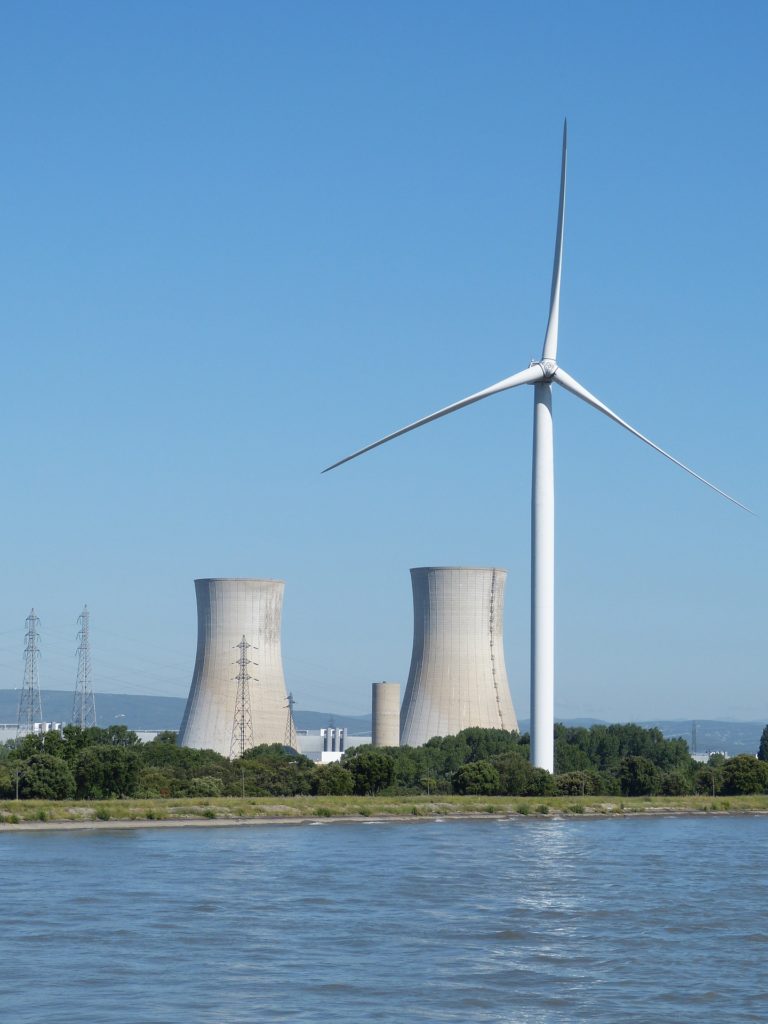
France uses nuclear power for electricity, which generates radioactive waste
In 2019 nuclear power from 56 operating reactors made up approximately 70% of France’s domestic electricity generation. Although there are approximately 1,200 radioactive waste producers in France, the power reactors generate the bulk (58.8%) of radioactive waste nationally which reached a total volume of 1.54 million m3 by December 2020. Waste producers are responsible for the conditioning of their waste, as well as waste package acceptance applications, prior to transport to a future DGR.
France is one of the few countries which reprocesses spent nuclear fuel (SNF) for potential reuse in light water reactors. As such, the DGR is intended for HLW and long-lived intermediate-level waste (LL-ILW) resulting from reprocessing operations, rather than for SNF.
Fuel that is removed from reactors is considered used or “spent.” This spent fuel contains fissile materials such as plutonium which is considered a direct-use material for nuclear weapons.
It depends on the country. In France, fuel removed from reactors, elsewhere called spent fuel, is reused as fuel for other reactors. The process to reuse that fuel results in high-level waste that will be disposed of in the DGR.
The development, preparation, and implementation of this DGR – comprising a project called Cigéo – is the responsibility of Andra, the French National Radioactive Waste Management Agency. Andra began in 1979 as a part of the French Atomic Energy Commission (CEA) and was made independent under the 1991 Loi Bataille legislation which provided a mandate for radioactive waste management research into the options of actinide transmutation, long-term storage, or geological disposal.
An act in June 2006 furthered this mandate by establishing a timeline for licensing and commissioning a geological disposal facility.
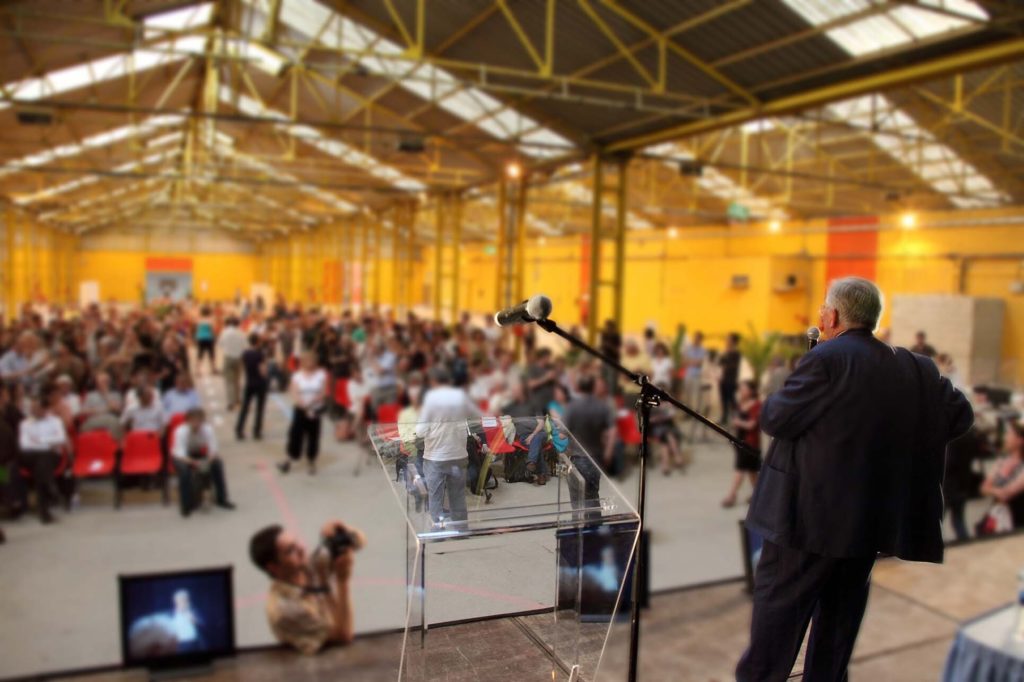
Public involvement has been key for the DGR planning process.
Public involvement has been a key component of waste disposal decision-making since the 1970s, when there were violent protests regarding waste disposal. Articles 8, 12, and 14 of the Loi Bataille emphasized public involvement and outreach as part of the waste management process. In Andra’s routine work and progress on Cigéo, it conducts public engagement activities among many audiences. As part of Cigéo’s development, two public debates have been held and public inquiries are regularly undertaken. Polls have shown that the local community is in favor of Andra’s activities, and opposition comes from further away. For example, a December 2020 poll showed that 65% of those polled within 15 km of the Meuse/Haute-Marne site trusted Andra to manage radioactive waste in the long term, while the percentage decreased among respondents further away.
The site selection process for a DGR began in 1992. In 2020 the public utility file (déclaration d’utilité publique, DUP) stage began, which provides a comprehensive view of all infrastructure and utilities involved in the project and represents the first major step towards licensing. In 2021 or 2022 the construction license is expected to be submitted. Its approval by all authorities including the French Nuclear Safety Authority is expected to take 4 to 5 years and the ensuing construction process is anticipated to take 10 to 15 years.
France works with a variety of stakeholders to keep their nuclear material safeguarded.
France is one of five nuclear-weapon States as defined by the Treaty on the Non-proliferation of Nuclear Weapons. Unlike non-nuclear-weapon States where the International Atomic Energy (IAEA) has the right and obligation to apply safeguards on all nuclear material under the State’s jurisdiction, nuclear-weapon States offer a list of selected facilities for voluntarily applying IAEA safeguards. The list of facilities France designates to the IAEA has so far only included those containing nuclear material to which third parties (such as nuclear suppliers) require the application of safeguards. France is also a member of the European Atomic Energy Community (Euratom) and its agreement with the IAEA is trilateral (France, Euratom and IAEA). As a party to this agreement, France’s civilian material is subject to Euratom safeguards.
Andra has begun discussions with Euratom and French authorities to prepare the preliminary safeguards declaration of the DGR. Given the material will be HLW and not spent fuel, there will be a different set of safeguards that will apply than for other DGRs (such as the one being built in Finland). As France moves towards licensing and construction, it will continue to work closely with Euratom and the IAEA to identify regional and international requirements and determine how safeguards can be appropriately implemented at the site.
The IAEA is an international organization tasked with monitoring and verifying the peaceful use of nuclear technology and material. Through coordination with member States and the application of international safeguards measures, the IAEA works to prevent nuclear energy facilities and material being diverted towards nuclear weapons programs. It was established on the 29th of July, 1957.
The European Atomic Energy Community (Euratom) was established on the 25th of March 1957 to create a single European market for trade in nuclear materials and technology. It also coordinates the research programs of its EU member States for the peaceful uses of nuclear energy. Euratom coordinates with the IAEA to apply safeguards.
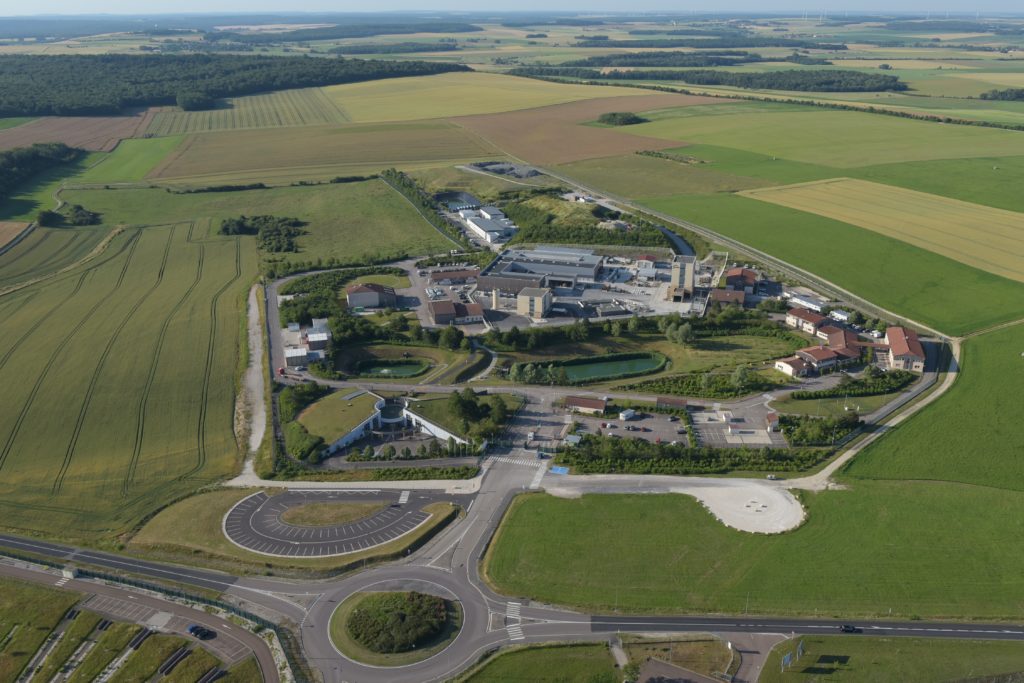
France serves as a case study for navigating the design, operation and siting of future repositories.
The virtual visit to France is undertaken as part of the Stimson Center’s “Back-End to the Future” project which is studying national approaches to radioactive waste disposal. The French example underscores the long timelines needed for the addressing technical, political, and societal elements of geological disposal. It serves as a case study for how the different safeguards commitments for nuclear-weapon States are valuable for understanding how designing and operating a future geological repository for high level waste can be navigated.
Images 1, 2, 4, 5 and header courtesy of Andra
